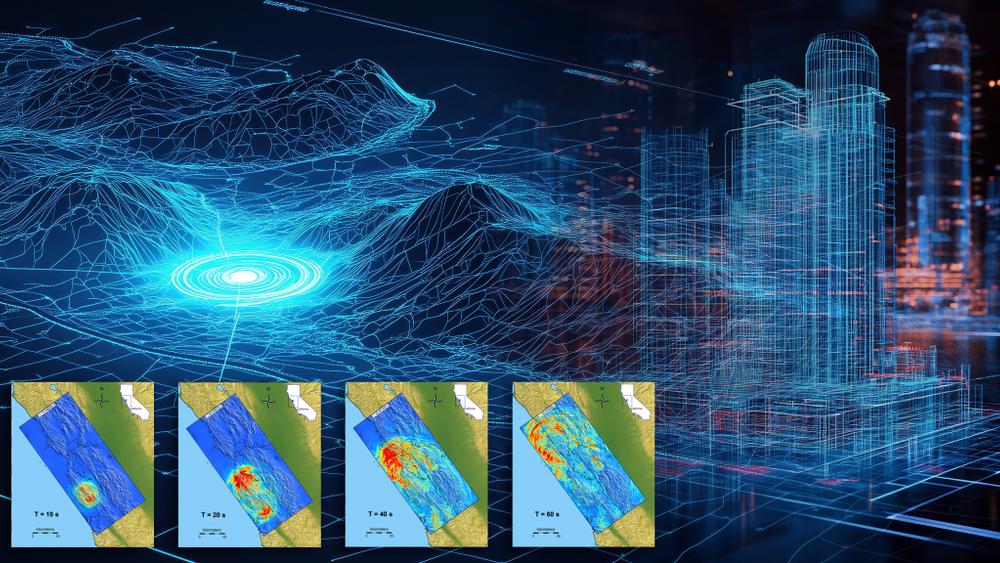Jason Smith/Oak Ridge National Laboratory, U.S. Dept of Energy
This illustration featuring earthquake simulation data from the San Francisco Bay Area shows how seismic energy is shaped and directed by local geology, and how buildings and infrastructure respond to intense ground shaking.
Simulations still can’t predict precisely when an earthquake will happen. Still, with the incredible processing power of modern exascale supercomputers, they can now predict how they will happen and how much damage they will likely cause.
|
ADVERTISEMENT |
Imagine a colossal earthquake strikes the California coast along the San Andreas Fault, one of the world’s most active seismic zones. Scientists have long been predicting this so-called “Big One.” But instead of chaos, there’s calm—thanks in part to an advanced early warning system that gave plenty of notice for people to take cover inside specially engineered, quake-resistant structures.
The U.S. Department of Energy’s Office of Cybersecurity, Energy Security, and Emergency Response, or CESER, is supporting a project led by David McCallen, a senior research scientist at Lawrence Berkeley National Laboratory who is working to make this potential future a reality—one in which earthquakes are met with preparedness, not panic.
McCallen is leading a team of researchers from Berkeley and Oak Ridge National Laboratories to develop the most innovative and advanced simulations to date for studying earthquake dynamics.
…

Add new comment